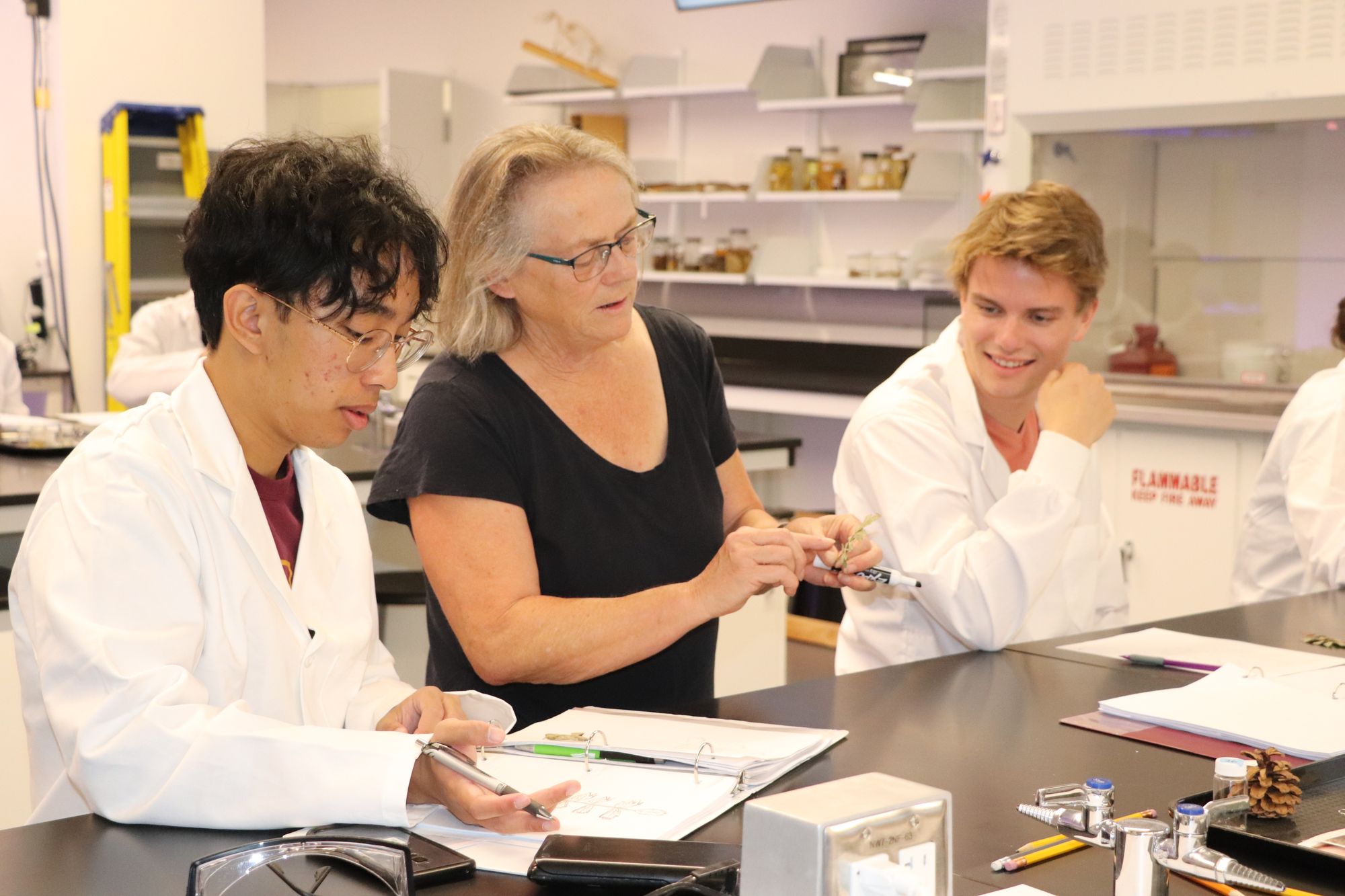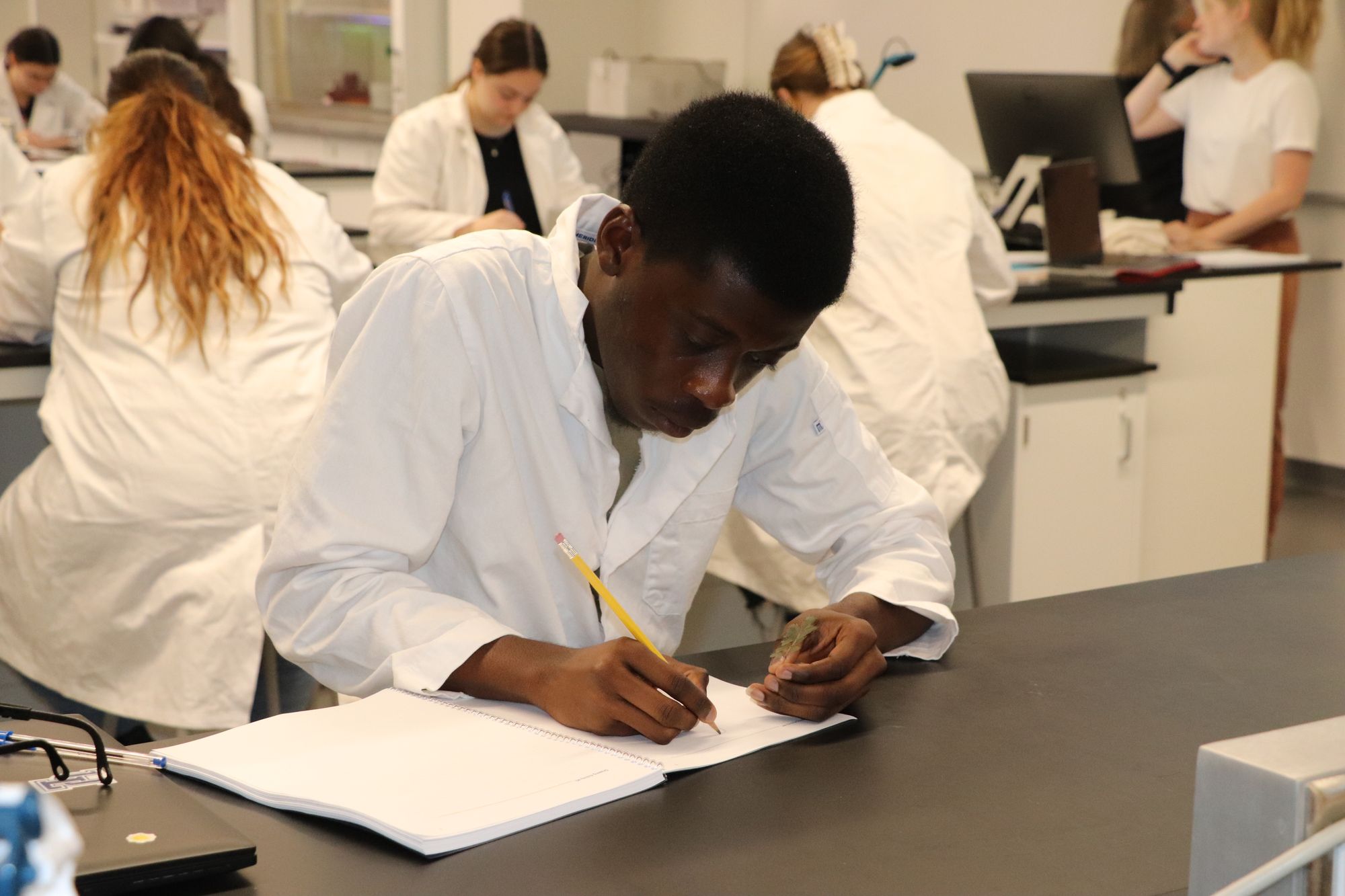As a second-year neuroscience student at the University of Lethbridge, Calum Partridge’s brush with art instruction was unexpected, but appreciated.
Partridge was among 180 students who recently experienced an art boot camp during Biology 1020, under the guidance of the Faculty of Fine Arts.
“I’m in three labs this semester and we’ve already had to do some drawing, and I did not do very well,” he says of his earlier sketching experience. “This art boot camp has helped my drawing skills and I feel more confident when doing biology drawings.”
Biology professor Jenny Burke approached the Faculty of Fine Arts about providing drawing tutorials to her biology students after experiencing a similar collaboration between university departments at a conference she attended. Art instruction was first introduced to her field botany students this summer to positive reviews, and that led to a pilot project for those enrolled in the introductory biology course this fall.
Observing and sketching the organisms they are studying are important skills for biology students, says Burke, and ones they’ll need throughout their studies. Yet many science students, like Patridge, have had little or no previous art instruction in their years leading up to university.
“We bring them in, we have them look through a microscope at these extremely complex, three-dimensional organisms, and we ask them to convert it to a two-dimensional drawing,” says Burke. “Since attending that workshop, it’s occurred to me that’s a big ask, and it could cause a lot of stress and anxiety for students.”
Dr. Josie Mills, Director/Curator of the University of Lethbridge Art Gallery and art professor, was asked to provide Burke’s students with 30-minute contour drawing and observation skill building instruction. Not only was it intended to bridge that art experience gap, but also counter a greater reliance among students to snap photos of those organisms with their smartphones.
“When you just take a picture, you don’t look at it. You don’t pay attention. You don’t learn from it. So, you actually have to do drawings as notes so that you can identify and detail and classify,” says Mills, who was joined in the art exercise by Beany Dootjes (BFA ’02), artist-in-residence with the University of Lethbridge Art Gallery. “There is lots that arts and science have in common. One of the things is careful observation – the idea that you’re really looking at what the thing actually looks like, not what you think it does. When you draw, it makes you do that.”
Artistic impression isn’t entirely foreign to first-year biology student Jennifer Romay, who enjoys painting in her spare time. She did find the art boot camp helpful, however, including instruction on sketching techniques when looking at organisms through a microscope, and a timed exercise to test students’ observational skills.
“Usually, I kind of take my time. So it's nice to see what you can do under a little bit of pressure,” says Romay.
Burke says she’d like to look into further collaboration with the Faculty of Fine Arts in future courses.
“That sort of synergy between science and fine arts is growing all the time and it’s a relationship that we do want to foster within the Department of Biological Sciences. Forging those connections also fits nicely with the liberal education model of the University,” she says.


Biology students participating in the art boot camp